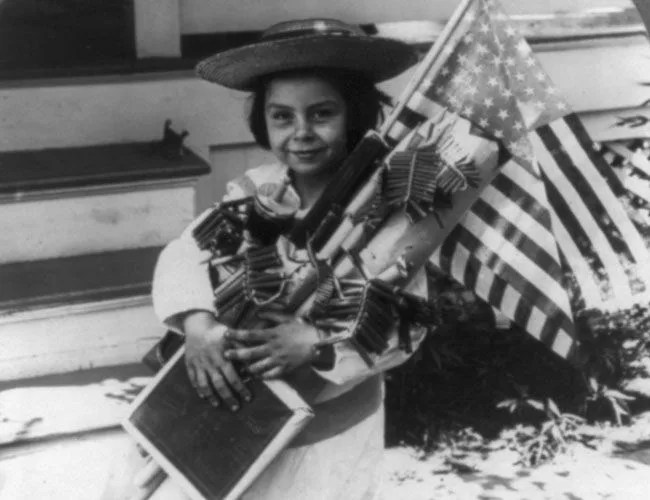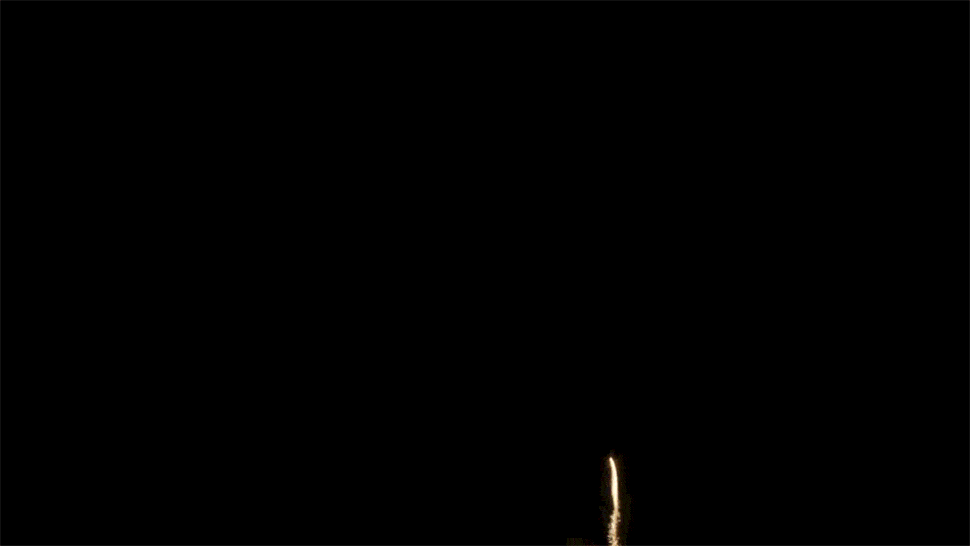Bamboo is extremely strong and grows in a series of hollow segments. Drop one of these into a fire, and the air inside will heat and expand until the bamboo explodes with a BANG. This phenomenon was first discovered, much to the delight of teenagers, around 200 BC in China, and “bàozhú”, Chinese for firecracker — from “bàozha” meaning explode and “zhu” meaning bamboo — was born.
For the next thousand years, exploding bamboo shoots were used to ward off evil spirits and, most likely, terrorize the elderly. Then around the 9th century AD, an alchemist, always on the search for immortality, mixed sulfur, charcoal, and potassium nitrate (saltpeter) and accidentally discovered gunpowder. Put a little gunpowder in a bamboo shoot and you have the world’s first firework. Put a lot and you have a bomb. Put it in a strong, open-ended tube and you have a cannon. China did just this when the Mongols invaded their country in the 13th century.
Word got out, via Mongolian wars, traveling missionaries and teenagers studying abroad on their parents dime, and the use of gunpowder started to spread through the Middle East into Europe. As you’d imagine, every warring nation put their top people on turning out more and better gunpowder in an effort to gain a military edge; as a result, fireworks started to become bigger and better. During this time it became custom that after you blew your enemies to bits with gunpowder in war, you celebrated the victory by blowing up the night sky with gunpowder, in a series of bright, orange flashes and loud sounds.
Still extremely popular in China, the prevalence of fireworks — now increasingly more intricate, aerial and planned — in Europe grew along with an interest in oriental culture and design (just look at the gaudy interior decorations of the Royal Pavilion in Brighton Beach as an example, which began construction in 1787 at the command of Prince George of Wales). The controlled explosions were increasingly used for religious ceremonies and public celebrations, along with military commemorations. Their use became somewhat of an arms race among royalty, who saw the explosive displays as synonymous with wealth, power and boosting morale.
However, this was still around the 17th and 18th century, so safety wasn’t priority number one. The dangerous job of firing off the firework displays was left to “green men” — a term taken from the 1635 book The Second Booke, a sort of how-to for all thing pyrotechnics — who wore leaves on their heads and soot on their skin in order to protect themselves from the sparks and fires and hide themselves from the crowd as they ran around lighting off an assortment of primitive fireworks.
Around this time Europeans were busy colonizing what would become the United States of America. Don’t think they left gunpowder and firework displays on the other side of the pond; colonists were such fans of lighting the stuff off that a ban was placed on the more mischievous uses of pyrotechnics in Rhode Island in 1731, which was also the first of the original colonies to declare independence from British rule — bringing us at last to July 4, 1776: the date appearing in the top right corner of the Declaration of Independence.

